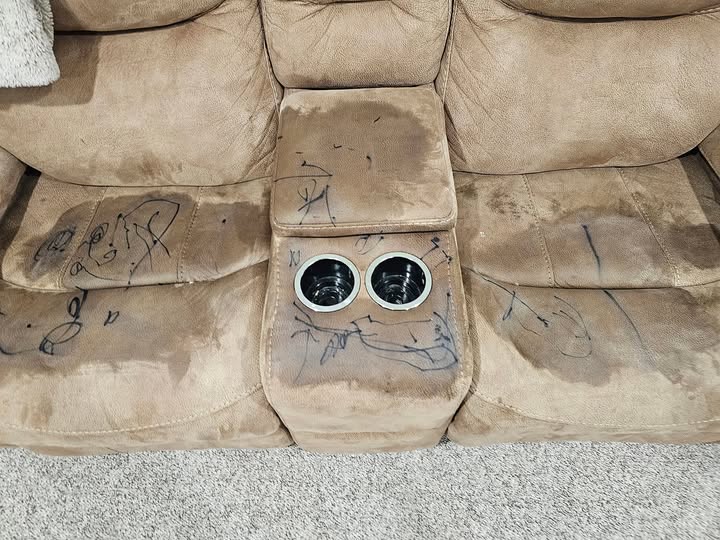DIY Sofa Cleaning: Removing Stains and Marks from Your Sofa on a Budget
The image shows a tan-colored sofa with visible stains and black marks, likely from ink or a marker. The user describes the issue as, "My sofa condition is very bad, how can I clean it?" The likely cause of the damage is unknown, but it appears to be a result of accidental marks or spills. It is essential to address this issue to maintain the sofa's appearance and extend its lifespan. This DIY approach is affordable and achievable with minimal expertise, ensuring a cost-effective solution.
Overview:
This repair guide provides a step-by-step process for cleaning a stained and marked sofa using low-cost materials and common household tools. The estimated time to complete is 30–60 minutes, and the skill level required is beginner-friendly, with no prior repair experience needed. The prerequisites include a clean workspace and basic household items such as a dry cloth, mild detergent, and a soft-bristled brush. The expected outcome is a restored sofa with minimal visible damage. General safety precautions include wearing gloves and working in a well-ventilated area. This DIY approach saves money by using household items and avoiding expensive professional cleaning services.
Tools and Materials Required:
- Mild detergent (e.g., dish soap): $1–$3
- Warm water
- Soft-bristled brush (e.g., an old toothbrush)
- Dry cloth
- White vinegar (optional): $1–$2
- Baking soda (optional): $1–$2
Step-by-Step Repair Guide:
- Prepare the Cleaning Solution: Mix 1 tablespoon of mild detergent with 1 cup of warm water in a bowl. Stir until the detergent is dissolved.
- Test the Solution: Dip a dry cloth into the solution, wring it out thoroughly, and test it on a small, inconspicuous area of the sofa to ensure the solution doesn't damage the fabric.
- Apply the Solution: Use the soft-bristled brush to gently apply the solution to the stained areas. Work in circular motions to avoid spreading the stains.
- Blot the Stains: Use a dry cloth to blot the stained areas, focusing on soaking up as much of the solution and stain as possible. Avoid rubbing the stains, as this can push them deeper into the fabric.
- Neutralize with Vinegar (Optional): If the stains persist, mix equal parts water and white vinegar in a bowl. Dip a clean cloth into the solution, wring it out, and apply it to the stained areas. The acid in the vinegar can help neutralize and lift the stains.
- Baking Soda Treatment (Optional): For tough stains, sprinkle baking soda liberally over the affected areas. Let it sit for 30 minutes to an hour, then vacuum up the baking soda.
- Dry the Sofa: Use a dry cloth to blot the sofa and remove any excess moisture. Allow the sofa to air dry completely.
Estimated Cost:
- Mild detergent: $1–$3
- White vinegar: $1–$2
- Baking soda: $1–$2
- Total estimated cost: $3–$7
Tips and Warnings:
- Always test a small area of the sofa before applying any cleaning solution to ensure it won't damage the fabric.
- Avoid using harsh chemicals or abrasive cleaners, as they can damage the sofa's material.
- For tough stains, consider using a specialized upholstery cleaner, but always follow the manufacturer's instructions.
- Regularly cleaning your sofa can help prevent stains and extend its lifespan.
Additional Engagement Elements:
FAQs:
Q: Can I use this method on a leather sofa?
A: No, this method is designed for fabric sofas. For leather sofas, you'll need a leather-specific cleaner and conditioner.
Q: What if the stains are still visible after cleaning?
A: For persistent stains, consider using a specialized upholstery stain remover or consulting a professional cleaner.
Q: How often should I clean my sofa?
A: It's recommended to clean your sofa every 6–12 months, or as needed, to maintain its appearance and extend its lifespan.





